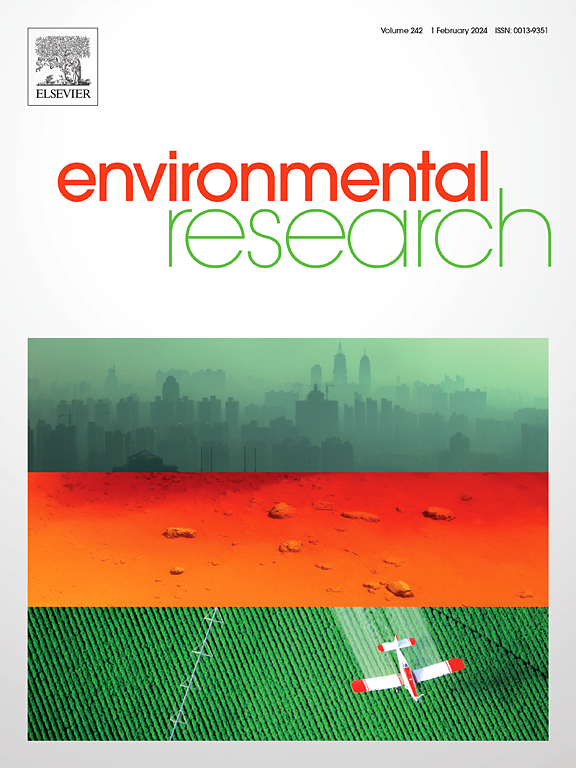中亚伊犁盆地吸光杂质对辐射强迫和融雪影响的研究
IF 7.7
2区 环境科学与生态学
Q1 ENVIRONMENTAL SCIENCES
引用次数: 0
摘要
矿物粉尘(MD)、有机碳(OC)、黑碳(BC)等吸光杂质(LAIs)沉积在雪中,可以降低雪的反照率,加速融雪。伊犁盆地受其独特的地理位置和西风大气环流的影响,是LAI沉积的关键区域。然而,对lai对该地区积雪影响的定量评估仍然有限。本文研究了积雪中LAIs的空间分布,并通过采样分析和模式模拟,定量评价了MD和BC对积雪反照率、辐射强迫和融雪持续时间的影响。结果表明,库内斯河流域MD含量相对较高,而特克斯河流域西南部OC和BC含量相对较高。在杂质中,MD对雪反照率的降低起主导作用,对雪吸收太阳辐射的影响大于BC, MD是导致伊犁盆地融雪日数减少的最重要的吸光杂质。在MD和BC的共同作用下,伊犁盆地融雪周期由2.19±1.43 d缩短至7.31±4.76 d。本研究初步了解了伊犁盆地积雪中LAIs的特征及其对融雪的影响,为进一步研究LAIs对该地区融雪径流和水文过程的影响提供了必要的基础数据。本文章由计算机程序翻译,如有差异,请以英文原文为准。

Insights into the impact of light-absorbing impurities on radiative forcing and snowmelt in the Ili Basin in Central Asia
Light-absorbing impurities (LAIs), such as mineral dust (MD), organic carbon (OC), and black carbon (BC), deposited in snow, can reduce snow albedo and accelerate snowmelt. The Ili Basin, influenced by its unique geography and westerly atmospheric circulation, is a critical region for LAI deposition. However, quantitative assessments on the impact of LAIs on snow in this region remain limited. This study investigated the spatial distribution of LAIs in snow and provided a quantitative evaluation of the effects of MD and BC on snow albedo, radiative forcing, and snowmelt duration through sampling analysis and model simulations. The results revealed that the Kunes River Basin in the eastern Ili Basin exhibited relatively high concentrations of MD. In contrast, the southwestern Tekes River Basin showed relatively high concentrations of OC and BC. Among the impurities, MD plays a dominant role in the reduction of snow albedo and has a greater effect on the absorption of solar radiation by snow than BC, while MD is the most important light-absorbing impurity responsible for the reduction in the number of snow-melting days in the Ili Basin. Under the combined influence of MD and BC, the snowmelt period in the Ili Basin was reduced by 2.19 ± 1.43 to 7.31 ± 4.76 days. This study provides an initial understanding of the characteristics of LAIs in snow and their effects on snowmelt within the Ili Basin, offering essential basic data for future research on the influence of LAIs on snowmelt runoff and hydrological processes in this region.
求助全文
通过发布文献求助,成功后即可免费获取论文全文。
去求助
来源期刊

Environmental Research
环境科学-公共卫生、环境卫生与职业卫生
CiteScore
12.60
自引率
8.40%
发文量
2480
审稿时长
4.7 months
期刊介绍:
The Environmental Research journal presents a broad range of interdisciplinary research, focused on addressing worldwide environmental concerns and featuring innovative findings. Our publication strives to explore relevant anthropogenic issues across various environmental sectors, showcasing practical applications in real-life settings.
 求助内容:
求助内容: 应助结果提醒方式:
应助结果提醒方式:


